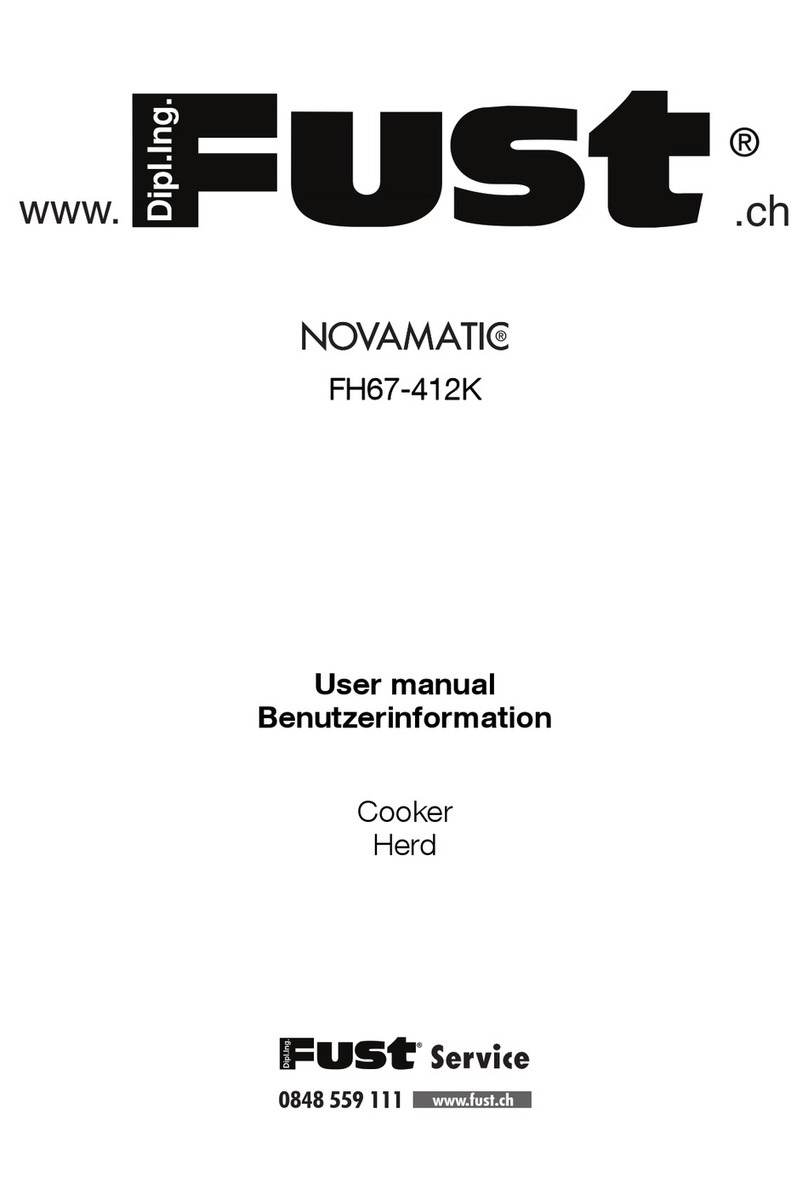
• You must have the correct isolation devi-
ces: line protecting cut-outs, fuses
(screw type fuses removed from the hold-
er), earth leakage trips and contactors.
• The electrical installation must have an iso-
lation device which lets you disconnect
the appliance from the mains at all poles.
The isolation device must have a contact
opening width of minimum 3 mm.
• The shock protection parts must be fixed
in such a way that they cannot be un-
done without tools.
• Always use a correctly installed shock-
proof socket.
• When you connect electrical appliances
to mains sockets, do not let cables touch
or come near the hot appliance door.
• Do not use multi-way plugs, connectors
and extension cables. There is a risk of fire.
• Make sure not to squash or cause dam-
age to the mains plug (if applicable) and
cable behind the appliance.
• Make sure that the mains connection is
accessible after the installation.
• Do not pull the mains cable to disconnect
the appliance. Always pull the mains plug
(if applicable).
• Do not replace or change the mains ca-
ble. Contact the service centre.
Use
• Only use the appliance for domestic cook-
ing tasks. Do not use the appliance for
commercial and industrial use. This is to
prevent physical injury to persons or pre-
vent damage to property.
• Always monitor the appliance during op-
eration.
• Always stay away from the appliance
when you open the door while the appli-
ance is in operation. Hot steam can re-
lease. There is a risk of burns.
• Do not use this appliance if it is in contact
with water. Do not operate the appliance
with wet hands.
• Do not use the appliance as a work sur-
face or storage surface.
• The cooking surface of the appliance be-
comes hot during use. There is a risk of
burns. Do not put metallic objects, for ex-
ample cutlery or saucepans lids, on the
surface, as they can become hot.
• The interior of the appliance becomes hot
during use. There is a risk of burns. Use
gloves when you insert or remove the ac-
cessories or pots.
• Open the door carefully. The use of ingre-
dients with alcohol can cause a mixture
of alcohol and air. There is the risk of fire.
• Do not let sparks or open flames come
near the appliance when you open the
door.
• Do not put flammable products or items
that are wet with flammable products,
and/or fusible objects (made of plastic or
aluminium) in, near or on the appliance.
There is a risk of explosion or fire.
• Do not use the cooking zones with empty
cookware or without cookware
• Do not let cookware boil dry. This can
cause damage to the cookware and hob
surface.
• If an object or cookware falls on the hob
surface, the surface can be damaged.
• Do not put hot cookware near to the con-
trol panel because the heat can cause a
damage to the appliance.
• Be careful when you remove or install the
accessories to prevent damage to the ap-
pliance enamel.
• Cookware made of cast iron, cast alumi-
nium or with damaged bottoms can
scratch the hob surface if you move them
on the surface.
• Discoloration of the enamel has no effect
on the performance of the appliance.
• To prevent damage or discoloration to
the enamel:
– do not put any objects directly on the
appliance floor and do not cover it with
aluminium foil;
– do not put hot water directly into the ap-
pliance;
– do not keep moist dishes and food in
the appliance after you finish the cook-
ing.
• Do not apply pressure on the open door.
• Do not put flammable materials in the
compartment below the oven. Keep
there only heat-resistant accessories (if
applicable).
• Do not cover oven steam outlets. They
are at the rear side of the top surface (if
applicable).
3




























